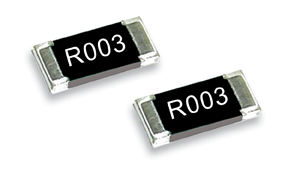These critical products are keeping pace with the ever-changing electronics industry
BY KORY SCHROEDER
Stackpole Electronics
Raleigh, NC
http://www.seielect.com
Electronics design engineers are being pulled in countless directions depending on what they are being tasked to design. Consumer device designs must be smaller, lighter, and less expensive, with increased functionality, and constructed in a manner that can be easily and quickly brought to market.
In addition, automotive electronic designs must withstand harsh environmental factors including high temperatures, sulfur, and moisture. And medical electronic devices must withstand electrical and environmental conditions beyond what they are typically designed for.
Power supplies continue to push the technological limits of power dissipation, given the trend toward smaller and lighter package sizes with increased features. Solutions usually come with tradeoffs that sometimes have unforeseen short-term or long-term effects.
Resistors, obviously, are critical in all these applications, and serve a variety of functions. So the resistor industry must continue to improve, advance, and develop because the requirements from all market segments demand it.
The need to shrink
Whether the design engineer needs to make a current end product or circuit smaller, or add more functions to it, the requirements for the resistive components determine the need to use either smaller resistors or the same-size resistors and board space, but cram in more components. In terms of making resistors smaller, we are reaching the limits of the current technology.

The 0402 is the smallest of standard EIA sizes that has a favorable cost structure along with the ability to be mass produced at high speeds. While the 0201 and 01005 sizes are becoming somewhat more common, they are far from standard.
Additionally, these components are so small that they present a formidable set of challenges both from a component supplier standpoint and from the end-product manufacturer‘s point of view. These factors have led to a much slower acceptance and implementation for all markets. However, development of both the 01005 chip resistor size as well as 0201-width resistor arrays continue, as applications require these case sizes.
Dissipating more power
Another effect of the downsizing shift is to force resistors of a given size to dissipate more power. This means that power resistors need to be built to higher standards and need to be characterized at these higher power ratings.
Many years ago the EIA standard power ratings for a given thick-film chip resistor size were doubled. This was in response to not only the improvement in the components themselves, but also in the advances in circuit-board technology, and finally the industry’s collective knowledge on how boards can be built to maximize their power-handling efficiency.
More recently, the definition of the current-sense resistor and its widespread usage brought on another power-rating increase for a given chip package. Because of their inherent low resistance value and overall improved materials, design, and construction, this product group can dissipate even more power safely.
Now there are 2512-size chip resistors in values up to 1 MΩ that will dissipate 2 W of power with only a fraction of the heat that would normally be generated by a standard chip resistor. This development required improvements to resistor design, manufacturing materials, and the construction of a typical thick-film chip.
The designer is still limited, however, by the overall thermal characteristics of his or her particular circuit board and layout. Just because designers can put twice the amount of resistors in a given area does not mean it should be done.
The vast improvements in assembly machinery and pick-and-place devices have helped drive development of higher-wattage SMT packages. Five years ago it was nearly impossible to find a 3-W SMT resistor in any case size or package. Now they are commonplace, and there are even viable options for a 5-W SMT solution.
These high-wattage SMT devices must deal with the extreme heat associated with such high power levels and not compromise the integrity of the solder joints and solder pads, and must not elevate the board temperature over acceptable levels. This is usually accomplished by a variety of techniques.
Most of the common molded SMT wirewound and film types will elevate the resistive element off the board and will use a compliant lead, which allows the circuit board to expand. Other devices, such as TO-220, TO-247, and D2Pak resistors, will use the same heat sink as the power semiconductors commonly used. Further, there are SMT resistors that can dissipate 5 W safely without the use of a heat sink and with no required air movement. ■
For more on resistors, visit http://electronicproducts-com-develop.go-vip.net/passives.asp.
Advertisement
Learn more about Stackpole Electronics





